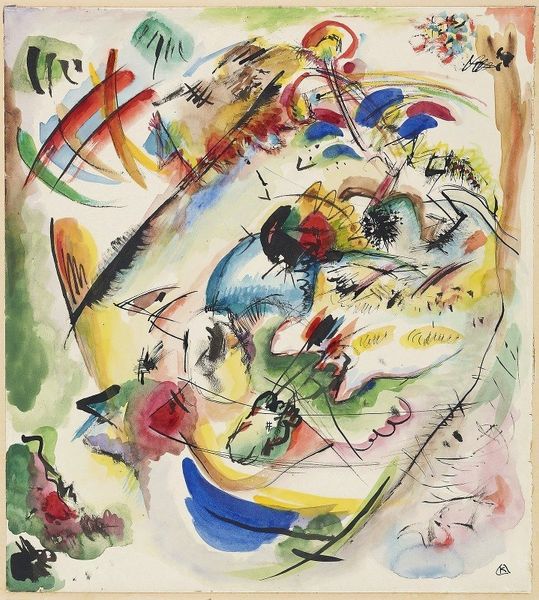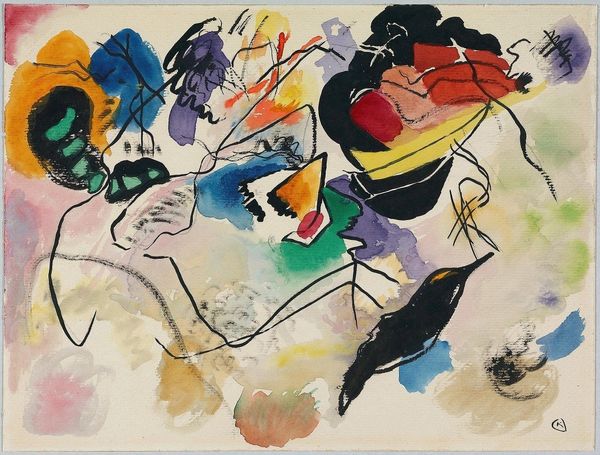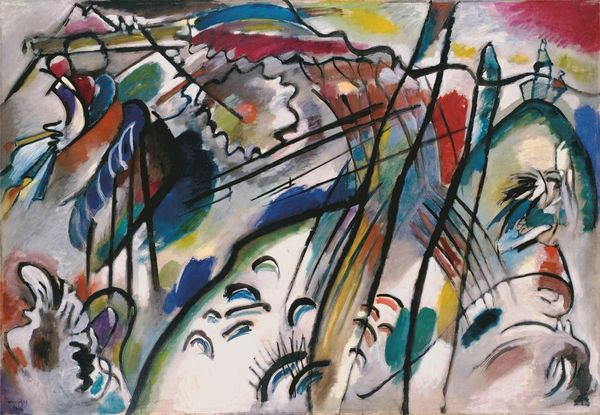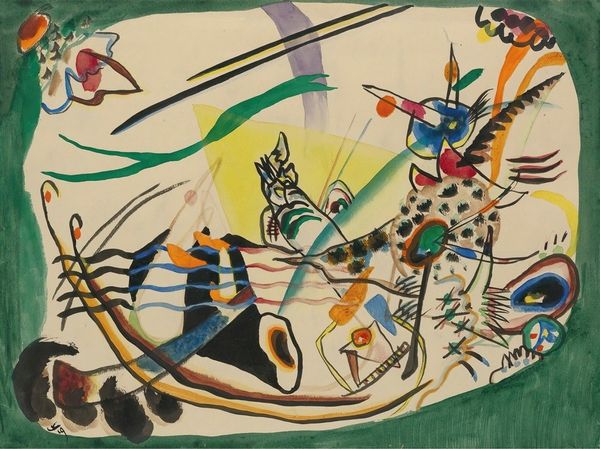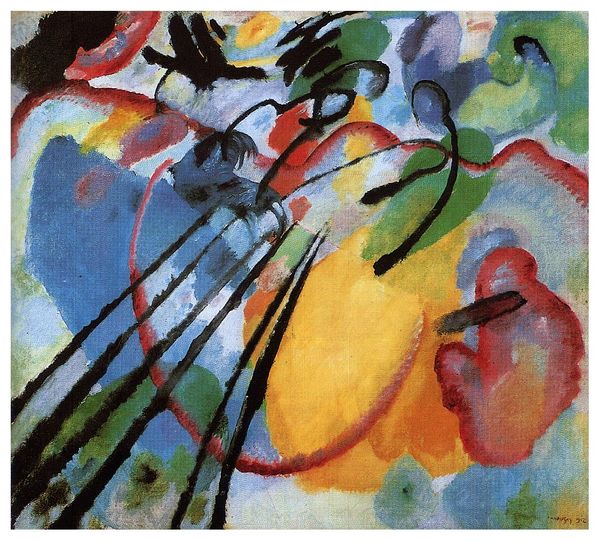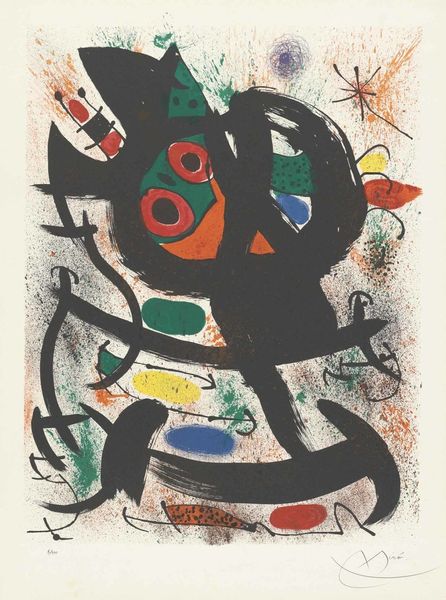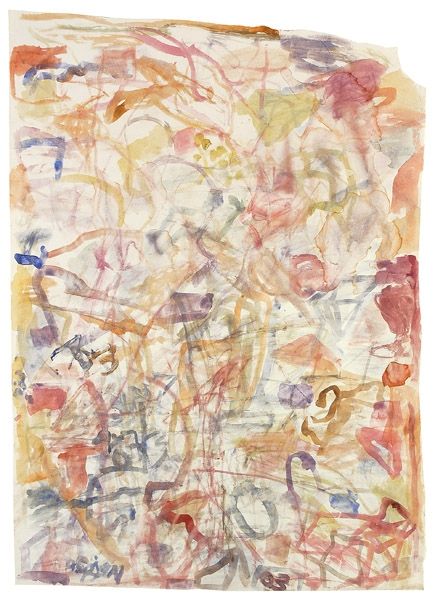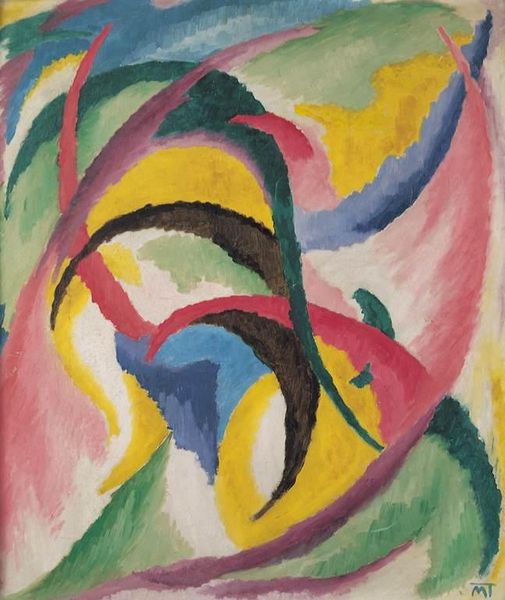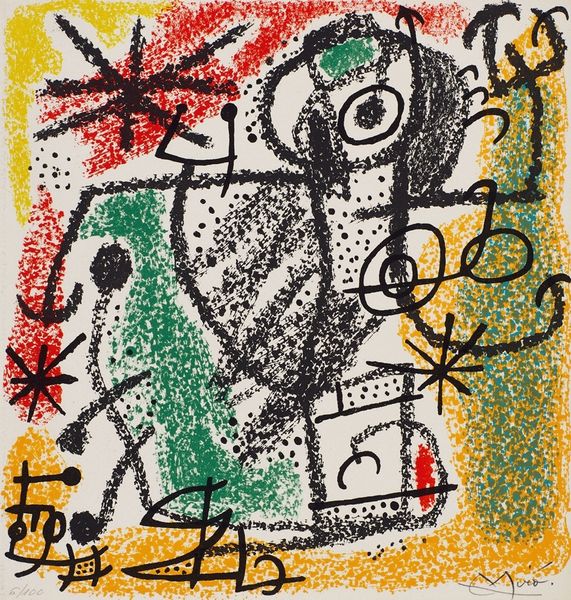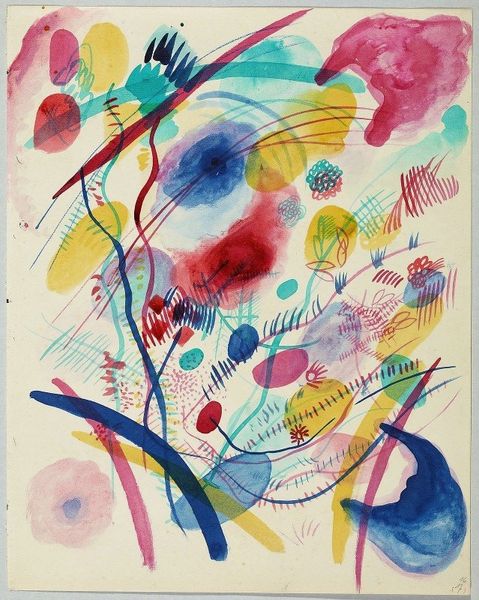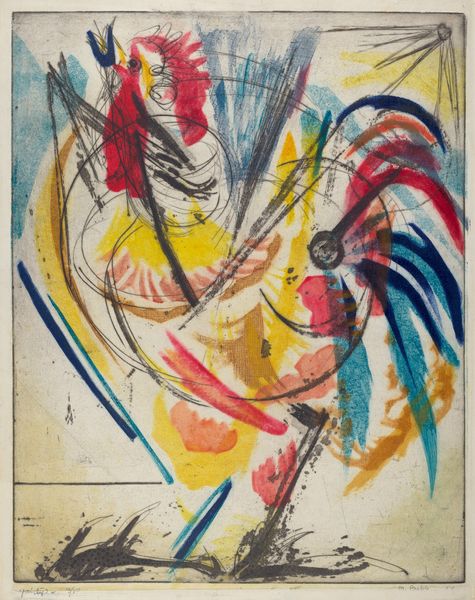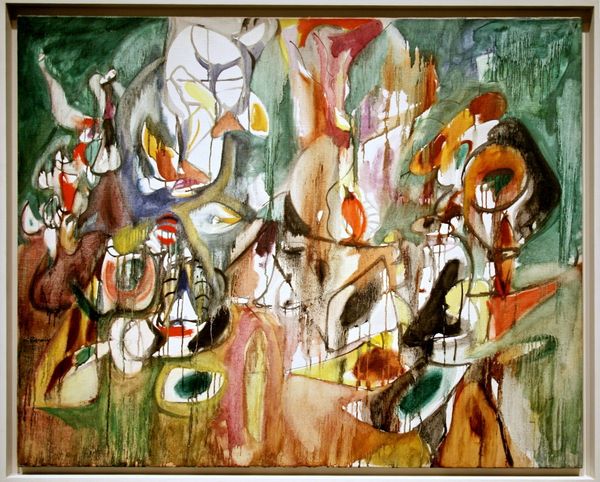
Copyright: Public Domain: Artvee
Editor: Wassily Kandinsky's "Watercolor IX," created in 1913. It's such a vibrant piece. The way he layered the colors is fascinating, and it almost looks like he's captured a moment of pure energy. What do you see in this piece beyond the colours and lines? Curator: It’s crucial to consider the materiality and context. Kandinsky chose watercolour, a medium often associated with spontaneity and amateur art, challenging the established hierarchies within artistic production. Look at the paper itself; its texture affects how the pigment is absorbed and displayed. It's not just about what is depicted, but how and with what materials it was made. Consider also that 1913 was a time of great social upheaval, pre-World War I. Could his move toward abstraction be a response to, or even a rejection of, a society he found increasingly fractured and materialistic? Editor: That’s a really interesting perspective. I hadn’t really thought about his choice of materials in terms of challenging art world norms. So the act of choosing watercolor was a deliberate one, a way to democratize art, perhaps? Curator: Precisely! The readymade quality of watercolors as a commercial material is hard to oversee; its accessibility makes a claim for new modes of artistic labor. The gestures appear unplanned but think about the artistic labour involved. Are those frantic lines truly accidental or strategically rendered to mimic free expression? These pieces required him to challenge material possibilities through artistic decision making. Editor: So, it's less about what the image represents, and more about how its existence challenges our understanding about the creation and cultural landscape of art, and more generally about the art market? Curator: Absolutely. We can ask questions such as how its process challenged painting’s more academic artistic forms. Now, consider this information combined with social contexts. It may affect the work's perception through various layers of meaning such as materiality. Editor: I never thought about abstraction in quite that way. Seeing the connection between material choices, labor, and the art market has really broadened my understanding. Thank you! Curator: My pleasure. Thinking about art this way brings it to life.
Comments
No comments
Be the first to comment and join the conversation on the ultimate creative platform.
